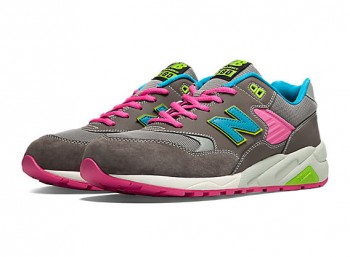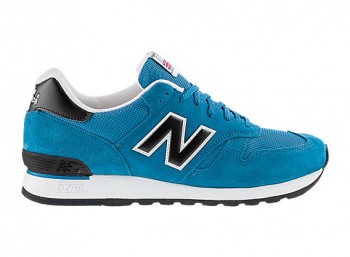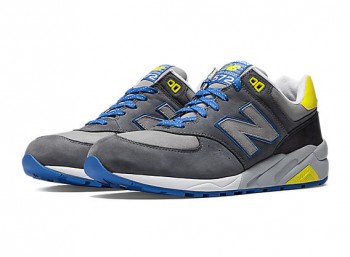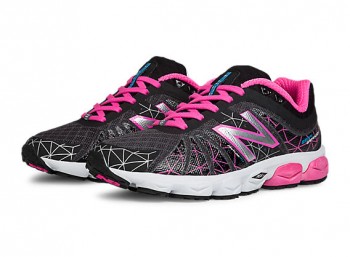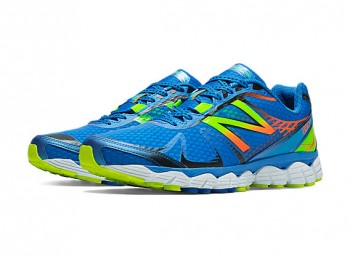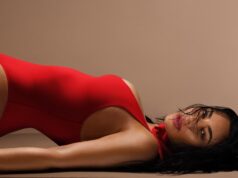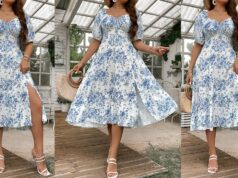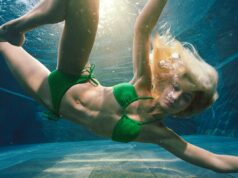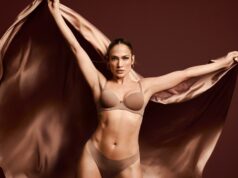Walking around London recently it is difficult to look down without noticing a reoccurring image; New Balance Sneakers. During the past 12 months more and more men and women have been rocking the versatile trainers in their various colours and models. The classic, clean and crisp design have seen this 100+ year old brand go from strength to strength, so with that in mind we decided to take a more detailed look at the foot-wear company currently taking over London’s pavements with this timeline!
1906
Founded on Fit
The New Balance story begins in Boston, Massachusetts. William J. Riley, a 33-year old English immigrant, starts making arch supports and prescription footwear to alleviate foot pain for people with problem feet. William Riley’s commitment to helping people through improved shoe fit has been the foundation of New Balance ever since.
1927
Selling to Folk on their Feet All Day
Arthur Hall is hired by Riley as a commissioned sales man. He purchases Arch Supports from Riley at $3 and sells them for $5 to everyday workers like policemen and retail clerks who are on their feet all day.
1933
The Great Depression
In 1933, in the midst of the Great Depression, Riley invites Arthur Hall to become his partner. Hall accepts and by staying small and innovative, New Balance survives when many footwear manufacturers are forced to shut down.
1938
First New Balance Running Shoe
William Riley designs and manufactures the first New Balance running shoe for a local running club, the Boston . Made of lightweight kangaroo leather and a crepe-sole, Riley sells six pairs to the club for $7.
1941
Multiple Sports Categories
New Balance designs and manufactures custom sports shoes for running, baseball, basketball, tennis and boxing.
1950
Riley Retires
Riley retires and leaves Arthur Hall to attend to both management and sales. After three years Hall sells the business to his daughter Eleanor and her husband Paul Kidd for $10,000. The Kidds bring new ideas and energy to the company. While Eleanor provides a high level of personalised service to walk-in customers, Paul runs the manufacturing. He grows increasingly interested in athletic footwear and seeks customer feedback to improve performance and fit of athletic shoes.
1960
World’s First Performance Running Shoe Made in Multiple Widths
The Trackster, manufactured in the basement of Paul and Eleanor Kidd’s home, is made in multiple widths to meet the needs of athletes with different shaped feet. Featuring a ripple outsole to enhance traction, absorb shock and prevent injury common with the metal spiked print shoes of the day, orders for The Trackster begin to pour in.
1961
Word of Mouth Spreads
New Balance sell the Trackster by word-of-mouth and grassroots promotions, at trade shows and coaches’ clinics. The Trackster becomes the shoe of choice for college running coaches and YMCA fitness directors. M.I.T. and Tufts University track team members who wear the Trackster report the shoes “just felt great.” Kenneth Cooper, M.D., the “Father of Aerobics,” becomes the first known person to run a marathon in New Balance shoes (Trackster, 1961).
1972
Sold
Marathon Day in Boston, 19 April, Jim Davis buys the company. At that time, New Balance comprises a basement workshop where six people are building the shoes and a little boutique above to sell them. This is the only place in the world where one can buy New Balance shoes. Jim spends most of his time listening to runners; he genuinely wants to make customers happy, he never thinks of marketing, he only cares about product quality and consumer satisfaction. New Balance has six associates making 30 pairs of shoes a day. Today, 30 years later, the company still retains 30% of its original labour force.
1975
European growth
Noel Tamini, publisher of European running magazine Spiridon, introduces New Balance to its readers. He becomes a New Balance distributor and grows awareness of the brand through the magazine, selling thousands of New Balance shoes throughout Europe. At an annual 21 kilometre race in Switzerland, 1977, Tamini sets up a station to measure the length and width of runners’ feet. After the race, runners line up to be measured and Tamini takes orders for 75 pairs of New Balance shoes in 90 minutes.
1976
Number One
The New Balance 320 and 305 are named the world’s best running shoes by Runners’ World, catapulting the brand to the forefront of modern athletic shoe design. The ‘jogging boom’ takes the USA, and the world, by storm. Suddenly everyone is running and New Balance sales are exploding.
1978
First Women Running Shoes and First Apparel
New Balance introduces its first apparel line to serve the performance needs of athletes from head to toe. The same year, New Balance debuts the W320, the first running shoe line designed exclusively for women – the first of its kind.
1978
London calling…
New Balance opens its first international sales office in London and a manufacturing facility opens in Ireland to meet explodingEuropean demand. In the USA manufacturing is also expanding. In 1980 worldwide sales reach $US 100,000,000: a 1000 fold increase in eight years! In 1982 the Irish factory is transferred to Workington, Cumbria, England (Lake District).
1980s
Times Changed
New Balance grows 100% in 10 years but not nearly as fast as the new global super brands who are changing the face of the sporting goods industry; ‘sneakers’ are now sold to teenagers all over the world as primary shoes and become an integral part of teenage culture. While competitors are investing billions in television advertising, New Balance is still only focussing on high performance/high quality.
1982
Most Memorable Duel in Marathon History
In the Boston Marathon, Team NB runner Dick Beardsley and Alberto Salazar battle for the lead over a nine mile stretch from the Newton Hills to the finish. Beardsley is the front-runner until Salazar moves into the lead with less than one mile left. Salazar wins with a time of 2:08:52 and Beardsley finishes two seconds behind, marking the first time two runners have broken 2:09:00 in the same race.
In the same year, there is growing awareness of the importance of aerobic exercise for fitness and disease prevention and aerobic exercise classes become popular. New Balance responds to the times by designing the Jamboree, the first aerobics shoe on the market. The shoe is lightweight and breathable.
1983
New Balance Focus on the Future
Jim and Anne Davis lead New Balance in its mission of being the world’s leading manufacturer of performance footwear and apparel. Their vision is to continually advance the technical performance of athletic footwear and apparel as well as develop a workplace that enables associates to grow and realise their full potential.
1998
Trail Running
Capturing the imagination of younger consumers across the US, the 801 Trail Shoe sells a million and a half pairs. New Balance goes on to develop the 800 rugged all-terrain series and is known as the company that established the trail shoe as a standard segment in the industry.
2000
Major Milestones
New Balance reaches $1 billion in annual sales, achieves the number 4 market share position and moves to new world headquarters in Boston.
2002
Breaking the Barrier
Team NB runner Khalid Khannouchi breaks his own world record of 2:05:38 in the London Marathon wearing NB RC110 racing comp. For the third year running New Balance is rated number 1 for consumer loyalty, in the athletic footwear industry, by Brand Keys, a firm that conducts a nationwide survey of adult Americans, and becomes number 2 footwear brand in the US.
2006
100 years on…
New Balance celebrates its centenary by producing three limited edition trainers to honour three of its longest serving employees at the Flimby factory – Audrey Stewart, Ian Byers and Victor Dixon.
2011
Onwards and upwards
New Balance EMEA continues to expand into new markets and grow in existing markets with a focus on the strong foundation in technical running and outdoor.



